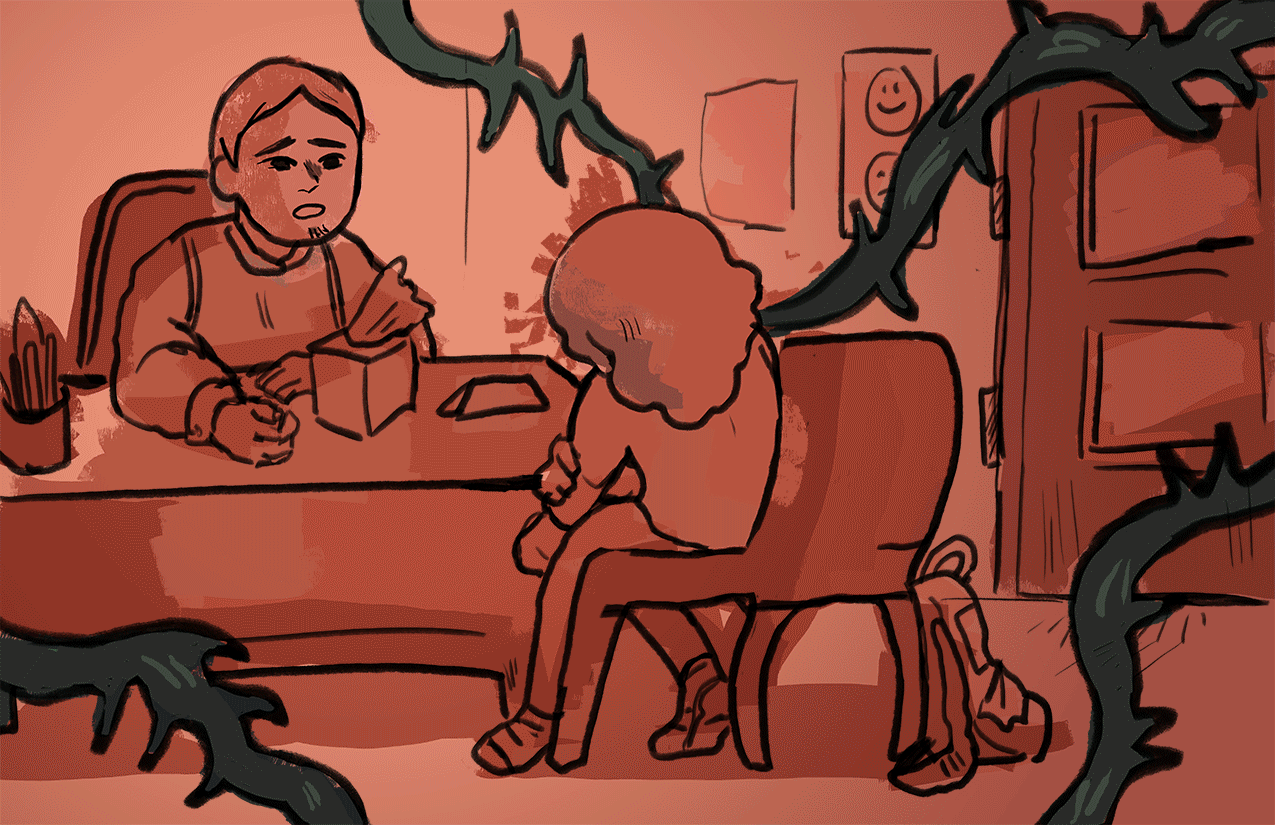[CW: This article contains mentions of self-harm/suicide and sexual violence.]
“Adults don’t get all the pressure that teenage girls have to deal with, from appearance to the way they act to how smart they are, to the things they do. It can be very overwhelming.” — Leilah Villegas
Leilah was one of the many girls interviewed in a recent Washington Post article on the “teenage girl mental health crisis.” Girls testified to stressors including body image insecurity, sexual violence, police violence, social media, racism, and the pandemic. They urged adults to “believe young girls” when they told them they were struggling. While each testimony is unique, together they paint a picture: teenagers, especially teen girls and LGBTQ+ youth, are in crisis.
The data back them up. In February, the CDC released the annual Youth Risk Behavior Survey. The results were alarming. Sixty percent of teenage girls described feeling persistently sad and hopeless, one in three teenage girls reported considering suicide, and one in five had faced sexual violence in their lifetimes. Experts hypothesize that the reason girls are reporting thinking about suicide at rates twice as high as teenage boys is because they are more likely to internalize pain and suffering and prone to self-blaming. LGBTQ+ youth had the highest reported rates of depression and suicidal ideation, with almost half having considered suicide. These results represent significant increases compared to past years. While the isolation and trauma inflicted by the coronavirus pandemic are certainly part of the story, these trends follow a years-long trend of worsening mental health among teens.
Wide-reaching structural changes are needed to address these factors, but we should start by building a public education system that puts mental health at the forefront. By improving school curricula and supplying funding for mental health professionals, schools can be a source of support in the lives of teenagers who are constantly confronted with turbulence and violence.
Schools are a vital point of focus, as they are one of the few public services that children come into contact with from an early age. They hold great potential for help and harm. The National Alliance on Mental Health explains that schools are a vital point of connection between youth, families, communities, and resources. Specifically, incorporating mental health support systems and professionals into public schools significantly lowers the barrier to entry for those services. In fact, 70 percent of children in the United States who access mental health professionals and counseling do so through public schools.
However, our public schools are chronically underfunded, and the lack of prioritization of students’ mental health means that this potential is not being realized. There is not a single state that currently meets the recommended social worker-to-student ratio of 1:250, and there are five states in which the ratio is over 1:4,000. Republicans are actively working to defund these systems. For example, in September, 200 House Republicans voted against a bill to fund basic mental health services in schools. With private counseling expensive and inaccessible, the responsibility to care for students’ mental wellness is left to overextended teachers—not trained mental health professionals.
We must stop neglecting our students’ health needs. First, we must extend the scope of school curricula to incorporate emotional wellness. Michael Prinstein, the chief science officer for the American Psychological Association, explains that “in schools, kids should be taught ways to manage stress and strife, just as they are taught about exercise for physical disease prevention.” The research backs this up, with one study showing that when students’ mental and emotional health is addressed in school, they show better academic performance and more prosocial behavior. Especially as Republicans in Florida, Oklahoma, Texas, and Georgia have been removing this curriculum from schools, incorporating these lessons equips children with helpful skills and strategies that could reduce their suffering.
Second, we need to add discussions of consent, sexual harassment, and sexual violence to sex education curricula. Testimonies from teenage girls and LGBTQ+ students give us a window into the ways in which schools are sites of sexual harassment and violence for many. This cannot continue. Right now, only eight states require teaching students about consent as part of their sex education curriculum. Furthermore, only 8.2 percent of students report having received an LGBTQ+ inclusive sexual education. A queer-inclusive, comprehensive model for sex education has the potential to promote healthier relationships, reduce sexual violence, and help LGBTQ+ students feel less isolated.
Third, we must increase funding to hire a diverse group of trained mental health professionals. Not only do we need a vast increase in the number of these professionals in schools, but it is also imperative that diversity is a hiring priority. School psychologists help students deal with crisis and loss, teach emotional resilience strategies, and develop school-wide curricula on suicide awareness and bullying. Many of these responsibilities are in response to students’ identity-based experiences.
For example, only 5 percent of school psychologists are Black, which leaves Black students with psychologists who may be unable to address aspects of their struggles, such as the effects of being inundated with videos of police violence. LGBTQ+ psychologists are also deeply needed to help create safe and empathetic spaces for LGBTQ+ students to have their struggles understood, validated, and addressed. These counselors could help students on an individual level and create safe affinity spaces to allow students to process events with a group of people who deeply understand their struggles.
Today’s youth are confronted with an increasingly tenuous and violent world. It is time to respond to this crisis by acknowledging that our education system has the potential to be a much-needed source of support. Ignoring the crisis is what has got us here. Continuing to do so puts the lives and well-being of the millions of teenagers who live in this country at risk. That cannot be a risk we are willing to take.
